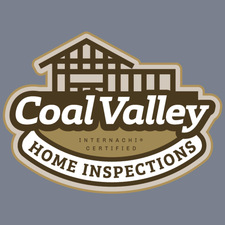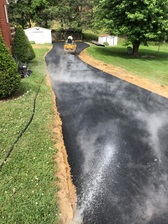
Get matched with top lawn irrigation specialists in Wayne, WV
Enter your zip and get matched with up to 5 pros
Need a pro for your lawn irrigation project in Wayne, WV?
Verified Reviews for Lawn Irrigation pros in Wayne, WV
*The Angi rating for Lawn Irrigation companies in Wayne, WV is a rating based on verified reviews from our community of homeowners who have used these pros to meet their Lawn Irrigation needs.
*The HomeAdvisor rating for Lawn Irrigation companies in Wayne, WV is a rating based on verified reviews from our community of homeowners who have used these pros to meet their Lawn Irrigation needs.
Last update on December 15, 2025
Find Lawn irrigation specialists in Wayne
Punisher Energy
Punisher Energy
Hydroseeding, Residential and Commercial
Hydroseeding, Residential and Commercial
FHM Environmental-Hire a Son Inc.
FHM Environmental-Hire a Son Inc.
We are a family based business specializing in all aspects of environmental enhancement. We have the
We are a family based business specializing in all aspects of environmental enhancement. We have the
Biederman underground utilities
Biederman underground utilities
We are an owmer operated buisness providing underground utilities to homes we have been doing this line of work for 7 years
We are an owmer operated buisness providing underground utilities to homes we have been doing this line of work for 7 years
bragg enterprises
bragg enterprises
We offer a wide variety of services, from construction, tree work, landscaping, heavy equipment repair and services, destruction of buildings, we also do repair on regular vehicles,etc. no job is to small or to large, contacts are kristy and ricky bragg, contacts numbers are 304-583-6004 (home), 304-583-5409 (shop), 304-687-6396 and 304-687-8904 (cell-phone's). We can be contacted 24 hours a day/ 7 days a week. On billing we require 1/2 up front and 1/2 after job is done.
We offer a wide variety of services, from construction, tree work, landscaping, heavy equipment repair and services, destruction of buildings, we also do repair on regular vehicles,etc. no job is to small or to large, contacts are kristy and ricky bragg, contacts numbers are 304-583-6004 (home), 304-583-5409 (shop), 304-687-6396 and 304-687-8904 (cell-phone's). We can be contacted 24 hours a day/ 7 days a week. On billing we require 1/2 up front and 1/2 after job is done.
The Wayne, WV homeowners’ guide to lawn irrigation services
From average costs to expert advice, get all the answers you need to get your job done.

Discover drip irrigation system cost estimates, key price factors, and ways to save. Get transparent pricing to plan your home irrigation project confidently.

If your sprinkler system isn’t working, it may be time for a new pump. Find out sprinkler pump replacement costs with this guide.
 •
•Find out the average sprinkler system repair cost, what impacts pricing, and how to save. Get transparent estimates to plan your sprinkler repair project.

Learn how to adjust Rain Bird sprinkler heads, no matter the type. Fine-tuning your sprinklers ensures optimal water usage and reach.

Irrigation controller on the fritz? Here’s how to tell whether your sprinkler controller is bad—and some steps to take to mitigate the problem.

Looking for pointers on how to design a sprinkler system? Use this guide to navigate the process and create the DIY sprinkler system of your dreams.
- Huntington, WV Lawn irrigation specialists
- Branchland, WV Lawn irrigation specialists
- Pea Ridge, WV Lawn irrigation specialists
- Catlettsburg, KY Lawn irrigation specialists
- Chesapeake, OH Lawn irrigation specialists
- Barboursville, WV Lawn irrigation specialists
- Proctorville, OH Lawn irrigation specialists
- South Point, OH Lawn irrigation specialists
- West Hamlin, WV Lawn irrigation specialists
- Louisa, KY Lawn irrigation specialists
- Rush, KY Lawn irrigation specialists
- Ona, WV Lawn irrigation specialists
- Hamlin, WV Lawn irrigation specialists
- Ashland, KY Lawn irrigation specialists
- Bellefonte, KY Lawn irrigation specialists
- Westwood, KY Lawn irrigation specialists
- Ironville, KY Lawn irrigation specialists
- Lesage, WV Lawn irrigation specialists
- Milton, WV Lawn irrigation specialists
- Harts, WV Lawn irrigation specialists
- Coal Grove, OH Lawn irrigation specialists
- Ironton, OH Lawn irrigation specialists
- Culloden, WV Lawn irrigation specialists
- Inez, KY Lawn irrigation specialists
- Kitts Hill, OH Lawn irrigation specialists
- Flatwoods, KY Lawn irrigation specialists
- Roofing in Wayne
- Excavating in Wayne
- Home Inspection in Wayne
- Tree Service in Wayne
- Cleaning in Wayne
- Electrical in Wayne
- Lawn And Yard Work in Wayne
- Pest Control in Wayne
- Swimming Pools in Wayne
- Insulation in Wayne
- Fencing in Wayne
- Kitchen And Bath Remodeling in Wayne
- Plaster Plaster Repair in Wayne
- Locksmiths in Wayne
- Land Surveying in Wayne
- Contractor in Wayne
- Driveways in Wayne
- Solar Panels in Wayne
- Computer Repair in Wayne
- Septic Tank in Wayne
- Windows in Wayne
- Awnings in Wayne
- Home Builders in Wayne
- Siding in Wayne
- Carpet Cleaning in Wayne
- Handyman Service in Wayne
- Structural Engineering in Wayne
- Deck Maintenance in Wayne
- Painting in Wayne
- Mulch And Topsoil in Wayne
- 🌱 "Mow a small front yard"
- 🛠 "Fix a leaking pipe under the sink"
- 🏠 "Repair shingles on an asphalt roof"



